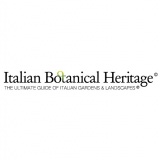
This park is a protected natural area established in 1987 and which extends on the promontory of the same name, in the province of Ancona. It includes a stretch of coast and an internal hilly belt, with breath-taking views, a lot of history, and wonderful landscapes.
The park covers about 15.000 acres and extends over the territories of Ancona, Camerano, Numana, and Sirolo. Mount Conero, with its white coves of white stone, at 1.876 ft overlooking the Adriatic Sea, is a unique relief of its kind from Trieste to the Gargano. The eastern slopes on the sea are made of limestone cliffs, while the rest is dominated by vast Mediterranean plant formations and mixed woods.
It takes its name from an actual promontory overlooking the sea, called “Komars”, by the ancient Greeks and meaning “strawberry tree” (Arbutus unedo), a Mediterranean shrub that grows in abundance along the slopes of this mountain.
The park offers many walks in the woods, some specifically designed for children; very different natural environments include the wetlands for the migration of birds of prey and herons, enchanting beaches, several historical and artistic structures, such as the Watchtower and the Romanesque church of Santa Maria in the Portonovo bay, as well as many wineries and farms where visitors can taste and buy, for example, the precious “Rosso Conero” wine, honey, oil, and legumes locally produced.
Flora and Fauna
About 1000 botanical species grow in the park. On the coastal cliffs, there are the most precious species of the promontory: cade juniper (Juniperus oxycedrus), tree purge (Euphorbia dendroides), Mediterranean spurge (Euphorbia characias subsp. Wulfenii), Pliny’s reed (Arundo pliniana, which compete with the streams), wild cabbage (Brassica montana), Pistacia lentiscus x terebinthus, and hairy dewflower (Drosanthemum hispidum), last reported in the mid-XIX century and considered extinct perhaps also due to several landslides: it was reintroduced in autumn 2010.
In Portonuovo, there are some brackish lakes behind the dunes, the only ones in the region, with the typical flora of those environments: it includes endangered species such as Cladium Mariscus and common sowthistle, in addition to pondweed, marsh reed, sea rush, and prickly rush. Near the stagnant or slow-flowing waters around the Musone River, there is Baudot buttercup (found only in Puglia Region and on the major Italian islands), wild mint, needle spike rush, purple loosestrife, duckweed, common reed, and water celery.
Many endangered species live on the dunes of the beaches of Marcelli and in the area behind them, including knotweed, night-flowering catchfly, beach thistle, beach poppy, Timothy-grass, and sea spurge.
In the wooded areas of the promontory, the holm oak (Quercus ilex) is the predominant species, representing the original vegetation of the Conero, along with strawberry trees, Mediterranean buckthorn, laurustine, Phyllirea media, ashes, Lonicera implexa, and, in the warmer areas, evergreen roses and common smilax; in wetter areas, there is bay laurel (Laurus nobilis).
Moreover, several trees date back to the reforestations which started in the early XX century: they include Aleppo pines, atlas cedars and cypresses (especially on Mount Colombo, Larciano, on the coasts between Monte and Sirolo, around Poggio, and near the Musone River).
On the other hand, in the countryside there are more common plants, mostly in rows and hedges, including downy oaks, field elms, black poplars, and blackthorn; along the waterways, there are white willows, black poplars, and downy oaks; in the sea valleys of Pietralacroce, there are downy oaks, common smilax, evergreen roses (Rosa sempervirens), while on the shaded slopes, there is the black hornbeam (Ostrya carpinifolia).
Mammals species of Conero Park include badgers, foxes, skunks, hedgehogs, weasels, wolves, and, even if not native, wild boars and roe deers. Many reptiles and amphibians are present as well.
The Conero is also a place of migration for birds of prey like herons: it’s thus a popular destination also for birdwatching enthusiasts.



